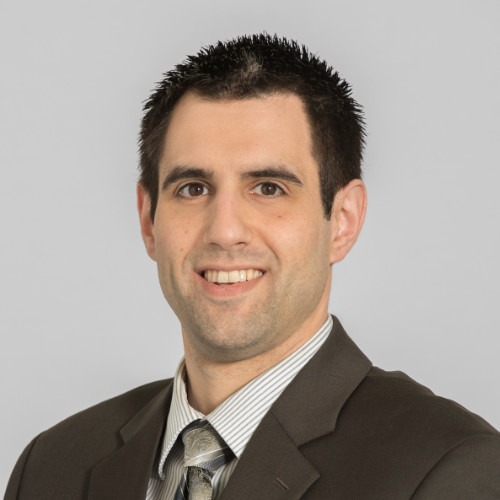Preparing your staff
TRAINING RESOURCES
For more information on CMS' training materials, including current RAI Manual updates, visit www.iadvanceseniorcare.com/CMS_MDS_Training. View Harmony Healthcare International's training seminar offerings at www.harmony-healthcare.com.
Package Download
Long-Term Living's editors have made this entire MDS 3.0 Special Section available for PDF download at www.iadvanceseniorcare.com/MDS_Special. Print and distribute to educate staff today.
To reiterate a salient point about the MDS 3.0 transition made by Leah Klusch earlier in this issue, “It is the middle of summer and you have until October to prepare your staff.” In other words, it is time to get moving.
Patsy Strouse, RAI/MDS education coordinator at the Ohio Department of Health, says there's no better way to get staff involved with the new MDS 3.0 resident interviewing process than by having them actually perform the interviews as soon as possible. “Take the form and do one of the MDS 3.0 assessments for practice using Chapter 3 of the manual as you go along,” she says. “Chapter 3 follows every question and item on the MDS 3.0 assessment form, and as you're doing that, it will give you coding tips.” Strouse explains that there are many examples in this manual-far more than in MDS 2.0-to lead providers through the assessments.
One practice method involves staff performing the interviews on each other, perhaps interdepartmentally. Or staff can go to the resident council for volunteers. Since some residents may already know that they will be asked to relate their feelings about their care, it would be wise to start talking about this change openly throughout the facility, Strouse suggests.
Kristen Mastrangelo, president and CEO of Harmony Healthcare International, a long-term care consulting firm specializing in reimbursement and MDS, says providers should go ahead and use the new tool today while assessing residents. Simply record 3.0 data on a separate piece of paper during 2.0 assessments and incorporate observations-such as what time of the day a certain individual should be interviewed, or even case studies on particular residents that might cause difficulties during the 3.0 assessment-into nurse's notes. This allows staff to be trained on the process as well as the content.
Deceptively simple
When it comes to the actual resident interviews, MDS 3.0 is refined and user-friendly. Strouse says that the manual is so detailed in what it outlines that the interviews are essentially scripts. Also, the Centers for Medicare & Medicaid Services will have the “VIVE” or “Video on Interviewing Vulnerable Elders” available on its Web site, under MDS 3.0 Training Materials, to show users the assessment's ease of use. Strouse insists interviewers should find no reason to deviate from the process stipulated in the manual.
However, to think the interviews will proceed without setbacks is a mistake of trusting the manual's simplicity, Mastrangelo warns. “It looks easy on paper, and it looks easy as a script,” she says. “But when you have a rambling patient who is distracted by his or her daughter coming to visit, or didn't like what he or she ate for lunch, the person that's interviewing the patient has to have that ability to be poised, interested, and allow the patient to state concerns but also keep him or her on task.”
Mastrangelo also recommends that the person handling coding must be open-minded and seek advice from others as there are “some instances” in which there can be multiple interpretations of sections.
Workarounds, resources
If, by any chance, the interviewer feels the information gathered during a resident interview is unreliable because of family disturbances, medications, or other distractions, a staff assessment can be used instead. “Only one interview gets recorded on the MDS, but it's still data gathering,” says Elisa Bovee, OTR/L, director of education and training at Harmony Healthcare International. “Your documentation would reflect that this clinician determined that a staff interview should be administered.” Regardless, the manual still instructs to write down all resident responses.
Other problems providers may encounter, Mastrangelo says, involve the short-stay assessment, which she calls “ambiguous,” and the discharge assessment. “Providers are going to perceive [the discharge assessment] as an added assessment and as more work, when they can actually combine most of them with other assessments.”
RAI coordinators are available for any questions a provider may have about MDS 3.0. Appendix B of the manual contains a list of all RAI coordinators in every state, but Strouse recommends that they should only be contacted if a provider does not understand what he or she is reading. Otherwise, most problems can be solved if people actually read the manual cover to cover, she says.
Most importantly, the Ohio Department of Health advises providers to check immediately with their states to see what MDS 3.0 training is available. As Strouse says, “This is some of the hardest work in the nursing home to do well.” Providers will certainly need a head start.
Long-Term Living 2010 August;59(8):34

Kevin Kolus wrote for I Advance Senior Care / Long-Term Living when he was an editor. He left the brand in 2012. He is now senior communications manager at Cleveland Clinic.
Related Articles
Topics: Articles , Facility management , Staffing











